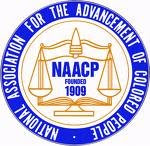
On January 24,1935 Donald Gaines Murray applied to the University of Maryland School of Law. He was denied acceptance not because he did not meet standards, but solely because of his race. Murray's denial letter stated, "The University of Maryland does not admit Negro students and your application is accordingly rejected." As a form of justification the University used the Plessey vs. Furguson doctrine of separate but equal to find Murray education at another instutition. Not taking no for an answer, Murray appealed the decision to the board of education. His appeal was also denied. Murray then filed a law suit against the University. Thourgood Marshall and Charles Houston represented Murray in this case. They argued the point that the decision of denying Murray the right of attending the university because of his race is a direct contradiction of the Fourteenth Amendment "separate but equal". No other Law schools could provide the quality education that theUniversity of Maryland could and it was the only Law school of its kind in Maryland.The court orderded the President to admit Murray to the University of Maryland. The NAACP used this case as one of the first of many stratgic attacks against the separate but equal clause in the Fourteenth amendment.
could provide the quality education that theUniversity of Maryland could and it was the only Law school of its kind in Maryland.The court orderded the President to admit Murray to the University of Maryland. The NAACP used this case as one of the first of many stratgic attacks against the separate but equal clause in the Fourteenth amendment.
 could provide the quality education that theUniversity of Maryland could and it was the only Law school of its kind in Maryland.The court orderded the President to admit Murray to the University of Maryland. The NAACP used this case as one of the first of many stratgic attacks against the separate but equal clause in the Fourteenth amendment.
could provide the quality education that theUniversity of Maryland could and it was the only Law school of its kind in Maryland.The court orderded the President to admit Murray to the University of Maryland. The NAACP used this case as one of the first of many stratgic attacks against the separate but equal clause in the Fourteenth amendment.
No comments:
Post a Comment